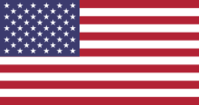Categories Online-Shop World Coins America United States of America
United States of America

The first dollar coins issued by the United States Mint (founded 1792) were similar in size and composition to the Spanish dollar. The Spanish, U.S. silver dollars, and Mexican silver pesos circulated side by side in the United States of America. And the Spanish dollar and Mexican peso remained legal tender until 1857. The coinage of various English colonies also circulated. The lion dollar was popular in the Dutch New Netherland Colony (New York), but the lion dollar also circulated throughout the English colonies during the 17th century and early 18th century. Examples circulating in the colonies were usually worn so that the design was not fully distinguishable, thus they were sometimes referred to as “dog dollars”. The U.S. dollar was created by the Constitution and defined by the Coinage Act of 1792. It specified a “dollar” to be based in the Spanish milled dollar and of 371 grains and 4 sixteenths part of a grain of pure or 416 grains (27.0 g) of standard silver and an “eagle” to be 247 and 4 eighths of a grain or 270 grains (17 g) of gold (again depending on purity). The choice of the value 371 grains arose from Alexander Hamilton's decision to base the new American unit on the average weight of a selection of worn Spanish dollars. Hamilton got the treasury to weigh a sample of Spanish dollars and the average weight came out to be 371 grains. A new Spanish dollar was usually about 377 grains in weight, and so the new U.S. dollar was at a slight discount in relation to the Spanish dollar.


